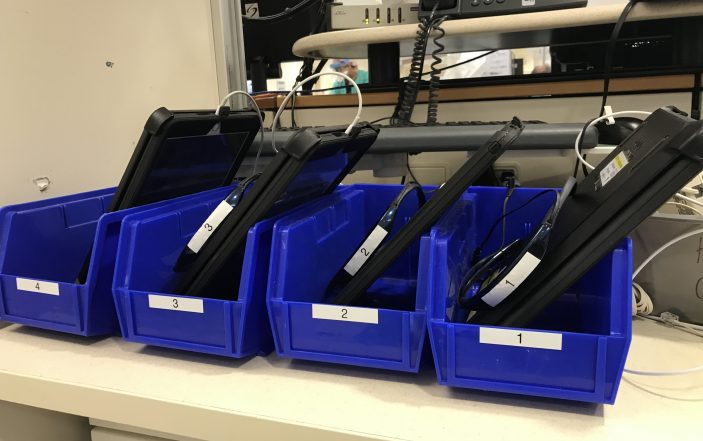With the pandemic changing the information flow, how it’s delivered is essential.
How we communicate with one another has always fascinated me. Since I was young, my preferred means of communication has always been writing. I find it therapeutic, organizing and limitless. Working clinically for nearly 15 years now, I believe I’ve gotten better at the “talking” aspect of explaining medical care to patients and families. For others, music, art and any number of other expressive forms are vital modes of communication. A burst of new technological methods has increased how we communicate—cell phones, social media, video chats, to name a few.

One of the most important lessons I have learned so far in this pandemic is the way in which we communicate is so crucial. In our ED, we quickly realized normal communication methods have fallen apart. Initially, our patients are several feet away with both staff and patients wearing masks that garbles regular speech (not even taking into account those with hearing or speech impairment, English as a second language, etc.). After triage and vital signs, we room each patient behind a closed door with a small window through which we can see one another. Initial intake is done from the outside, looking in, via a phone call.
Talking to patients from afar, wearing an N95 mask and face shield, is the antithesis of how I was taught to practice medicine. I can only imagine how scared and frightened the patients must be seeing us in full PPE. Those emotions are magnified given we cannot allow visitors into the hospital. I start every conversation telling patients ‘I’m sorry for having to do things this way, but I need to conserve PPE and ensure my team is safe upon entering the room.’
In response, our ED team devised an inclusive, tech-savvy way to communicate. We took smart tablets with wireless Bluetooth headsets and via the Zoom app, we can connect families with their loved ones. Other communication apps include livestorm and doxy.me. Primarily for critically ill COVID patients, I call the next of kin and ask them to download Zoom. We then bring the tablet to the window (or inside the room) to allow families to “see” and “talk” to each other for even just a few minutes. That time together is priceless.

Two nights ago, after stepping away from evaluating an alcoholic intoxication case and a minor blunt trauma, I grabbed our tablet setup and helped a wife and her teenage daughter see their husband/father, who was a PUI (person under investigation for COVID) with confusion and weakness. As they connected, I could hear the wife start to sob, so, I quietly left the tablet in the room for them to have some privacy, doffed my PPE and left. My nurse and I then pivoted to take care of two young adults with developmental delay from a group home that had just arrived.
One of their group members had tested positive for COVID and they were now showing symptoms (both tested positive the next morning). Within 20 minutes, ambulances brought three more PUIs—the last of which was an 81-year-old woman coming from home with fevers and increasing somnolence. I could not get any history from her and I knew from weeks of evaluating PUIs that she was sick and going to be COVID positive. I wasn’t able to go into the room right away so, I called up her daughter, Teresa. Teresa downloaded Zoom and we chatted for 15 minutes.
I learned her mother’s medical history and why she called the ambulance. I also found out her mother (and father) were both retired detectives! We discussed code status and I learned the patient was BLS certified for years and knew all about CPR, intubation and DNR orders. With that information, I was able to make a much more cohesive visit into the room for my exam and orders. The connection I made via Zoom helped me tremendously when I consulted the ICU for admission.

There are many variations on this theme of the intersection of communication and technology in medicine. I hope all healthcare settings in this pandemic will consider implementing something similar to our setup. I have always viewed our role in the ED as having many facets, but clear and direct communication with our patients and families is the most important one—now, more than ever.




1 Comment
Great perspective!